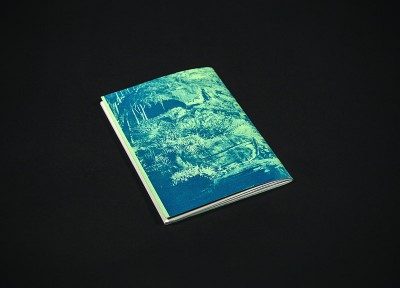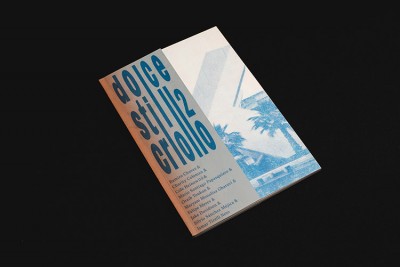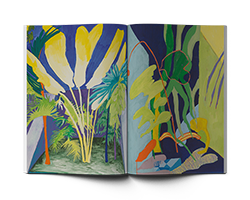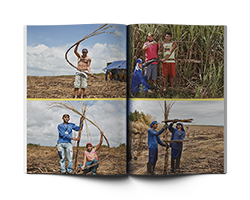Dolce Stil Criollo
Dolce Still Criollo is a neologism that invokes its own complexity. The publication derives from Dante’s inferno in order to establish itself in the Americas, where it serves as a platform for topical works investigating Latin America’s cultural-political sphere. Both its editorial line and experimental design seek to create a multilingual readership capable of reading across social registers.
Dolce Stil Criollo’s first issue explored the concept of “islands” as a dematerialized, intermediary space of possibility and border. The second issue, Beauty is Our Spiritual Guernica, proposed an aesthetics based on embodied vernaculars of signage and play and was published in partnership with Meli-Melo Press of Brazil. Both issues were printed using Risograph duplicators and were sold in art book fairs in Latin America, United States and Europe. Dolce Stil Criollo’s third issue explores how “tropical opacity” is a political mode of being that acknowledges the constructed nature of the tropical as nothing more than a pedagogical opportunity for its own re-imagining. The works within this issue respond to cultural factors from a globalized era in which knowledge and subjectivity are colonially determined, geo-politically situated, and economically conditioned.
The publication is edited by me and designed by Gabriel Finotti of the Brazilian design studio Sometimes Always.
Dolce Stil Criollo is in English, Spanish, and Portuguese. Visit the website.
Issue 1: Zine A5, 72pgs, 170grs conext green cover, 80gsm evercopy inners, side-stapled, one color risograph print in federal blue. Edition of 200. Self-published in Leeds, U.K.. 2013.
Issue 2: Zine A4, 106pgs, multi-format cover, perfect-bound, 2 color risograph print in orange and blue. Edition of 100. Published by Meli-Melo Press in São Paulo, Brazil. 2015.
Issue 3: Book A4, 160pgs, perfect-bound, 4 color offset printing. Edition of 1000. Self-published in São Paulo, Brazil with the help of Adidas, Cotton Project, Alexandre Herchcovitch, and Leograf.
Documentation by Gabriel Finotti.






















